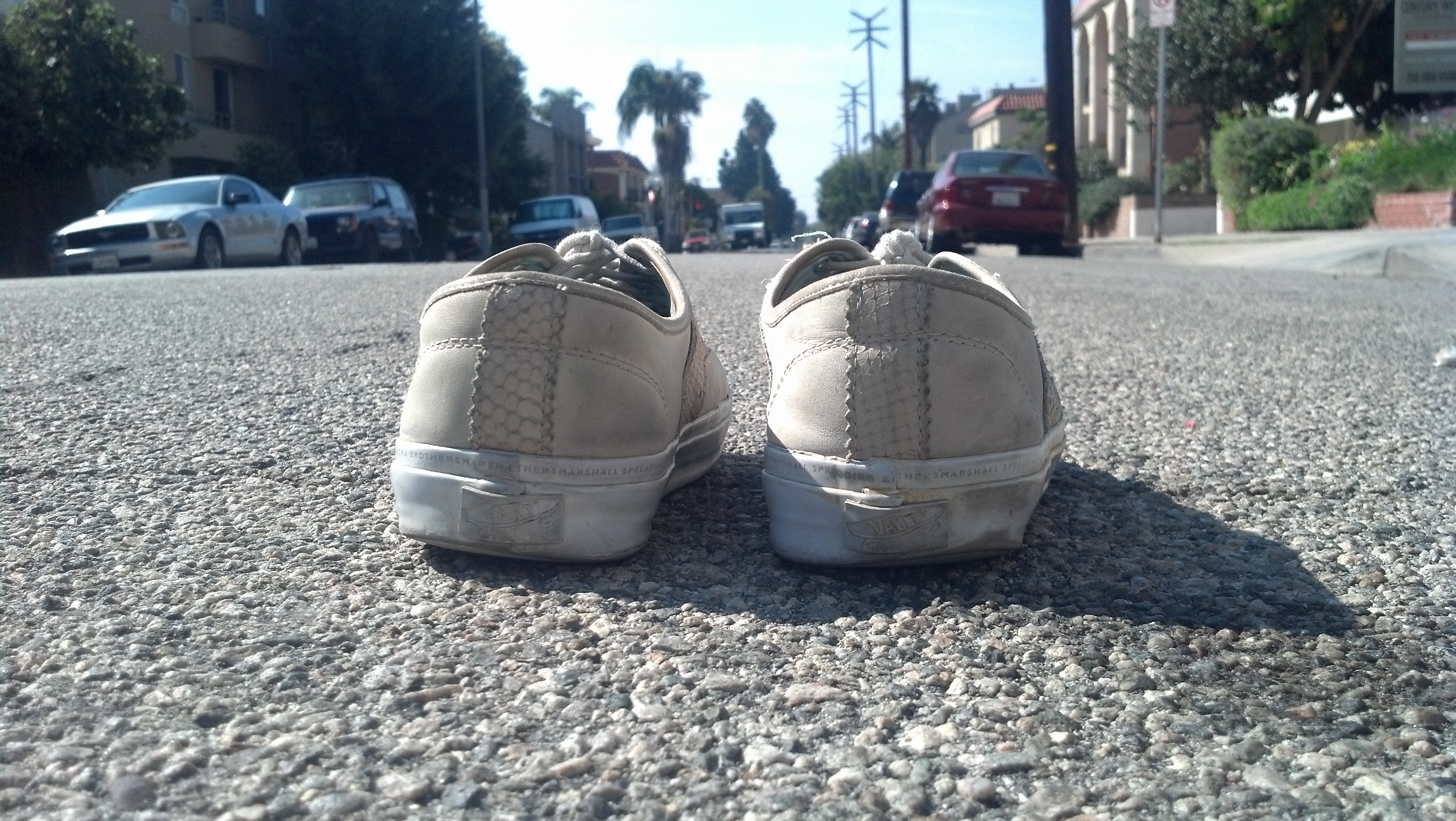Forrest Gumps momma said it best, “There’s an awful lot you can tell about a person by their shoes. Where they’re going. Where they’ve been.” Even more, your shoes can show how efficient/inefficient your body moves. Whether you are at risk for injury. Or if you’re in need of a new pair. As you can see in the picture of my shoes above, the back right corner of my right shoe is more worn than that of the left. As it turns out, within the last year I injured my right knee. What’s the correlation? Well, I can tell you that my shoes have always shown this uneven wear pattern. Had I known or understood the implications of the uneven wear I could have potentially avoided my eventual injury. In this article, you will learn what I learned the hard way about the different wear patterns and their implications for future injuries.
 The diagram to the right shows common wear patterns.The blue pattern or “normal pronator” is the optimum wear pattern. Heal to toe wear on both shoes indicates that your gait is symmetrical and efficient. In order for this to occur, posture and movement throughout the body must be optimum. The Green pattern “over pronater” can indicate flat feet or low arch. While the Orange Pattern “underpronator” can indicate high arch. To assess the wear pattern on your shoes, simply lay them on a flat surface and look for asymmetries. If one or both of your shoes is worn to the point of pronating or supinating replace them immediately.
The diagram to the right shows common wear patterns.The blue pattern or “normal pronator” is the optimum wear pattern. Heal to toe wear on both shoes indicates that your gait is symmetrical and efficient. In order for this to occur, posture and movement throughout the body must be optimum. The Green pattern “over pronater” can indicate flat feet or low arch. While the Orange Pattern “underpronator” can indicate high arch. To assess the wear pattern on your shoes, simply lay them on a flat surface and look for asymmetries. If one or both of your shoes is worn to the point of pronating or supinating replace them immediately.
Advice for buying new shoes: some new shoes can actually cause dysfunction due to manufacturing flaws. To assess a new pair of shoes place them side by side on a flat surface. Note whether they sit flat on the surface or if they easily rock back and forth. For obvious reasons, we want our shoes appear symmetrical and to lay completely flat.
Understanding the Implications of Asymmetry
The human body is incredibly complex. It is nearly impossible to determine any one cause for any injury. In fact, the uneven wear pattern could be the result of several issues and all of the potential issues should be examined and addressed. Unfortunately, common western rehabilitation and medicinal practices are symptom based and very rarely address the true cause of the injury or illness. For instance, let’s say you show up to your doctor with knee pain and they notice you have flat feet. Most likely, the Dr. will refer you to a podiatrist and more often then not, you’ll get sent home with a new pair of customized orthotics that your insurance may or may not cover. Interestingly enough, orthotics aren’t proven to prevent lower limb injuries or back pain. http://www.ncbi.nlm.nih.gov/pubmed/20492587 The most important point here is that the podiatrist doesn’t want to address the real issue. Instead, doctors want to treat your symptoms by selling you an orthotic that ‘may seem like a logical fix’ so they can do the same for the next person in line. Big surprise! It’s all about money. What the podiatrist in this example should’ve mentioned, is that flat feet are a result of dysfunctional movement and vice versa. Over time we develop compensatory movement patterns and poor posture because of overuse, the effects of gravity, joint mobility and stability dysfunction, and asymmetry in movement. Common injuries like those of the knee and back can often be prevented with proper footwear, mobility and stability training, and by addressing dysfunction in training.
NewManStrength Solution:
Uneven wear patterns are indicative of inefficient movement patterns. While the human body is extremely resilient, inefficiency in movement will eventually result in injury. To avoid injury one must optimize movement and restore function. However, restoring function is a difficult and comprehensive process that involve many variables. For that reason, I recommend that you seek professional assistance.
Questions to ask the pros:
- ask the professional to measure your lower limbs for length discrepancy.
- Have your hips and lower back examined for soft tissue asymmetry or capsulation.
- Have your functional movement analyzed by a qualified movement screening professional
- Use two electronic scales to assess even distribution of weight over each lower limb. (simply stand on two scales and see if there is a difference in weight)
- lay flat on your back with your ankles, heels and toes aligned. (place a level on your knees to see if there is a length discrepancy*)
- Video yourself walking on a treadmill. (look for asymmetry in movement and uneven position of the ankles)


Leave a Reply
You must be logged in to post a comment.